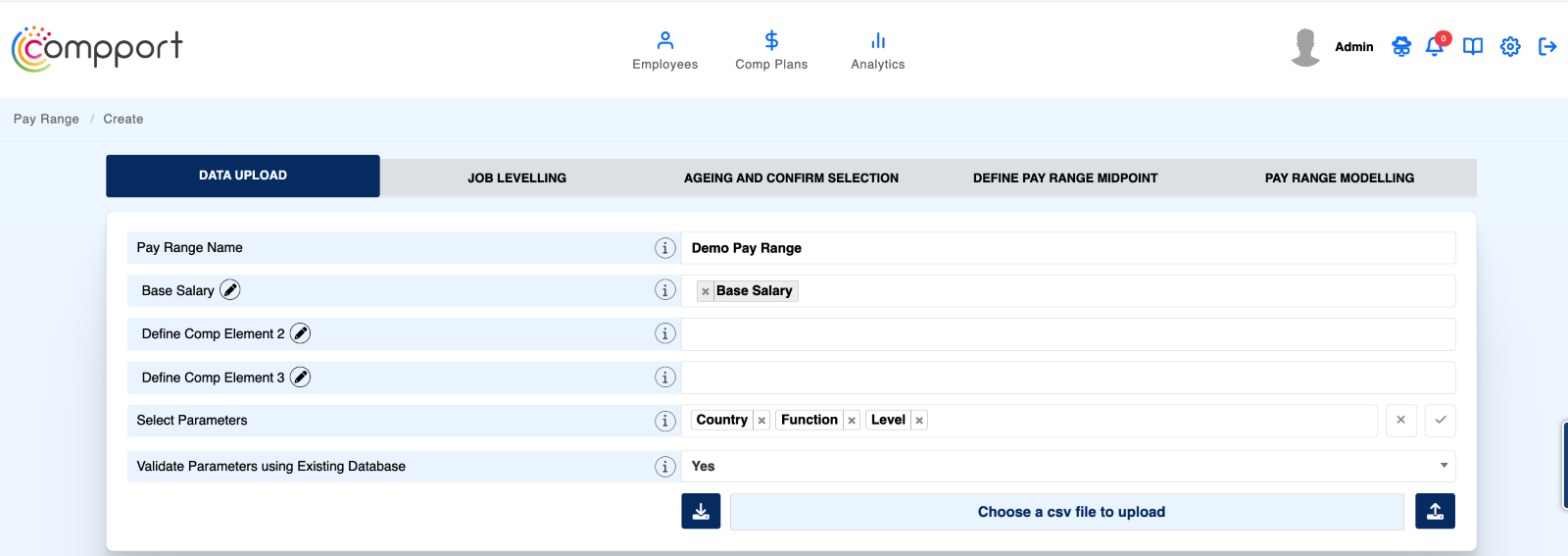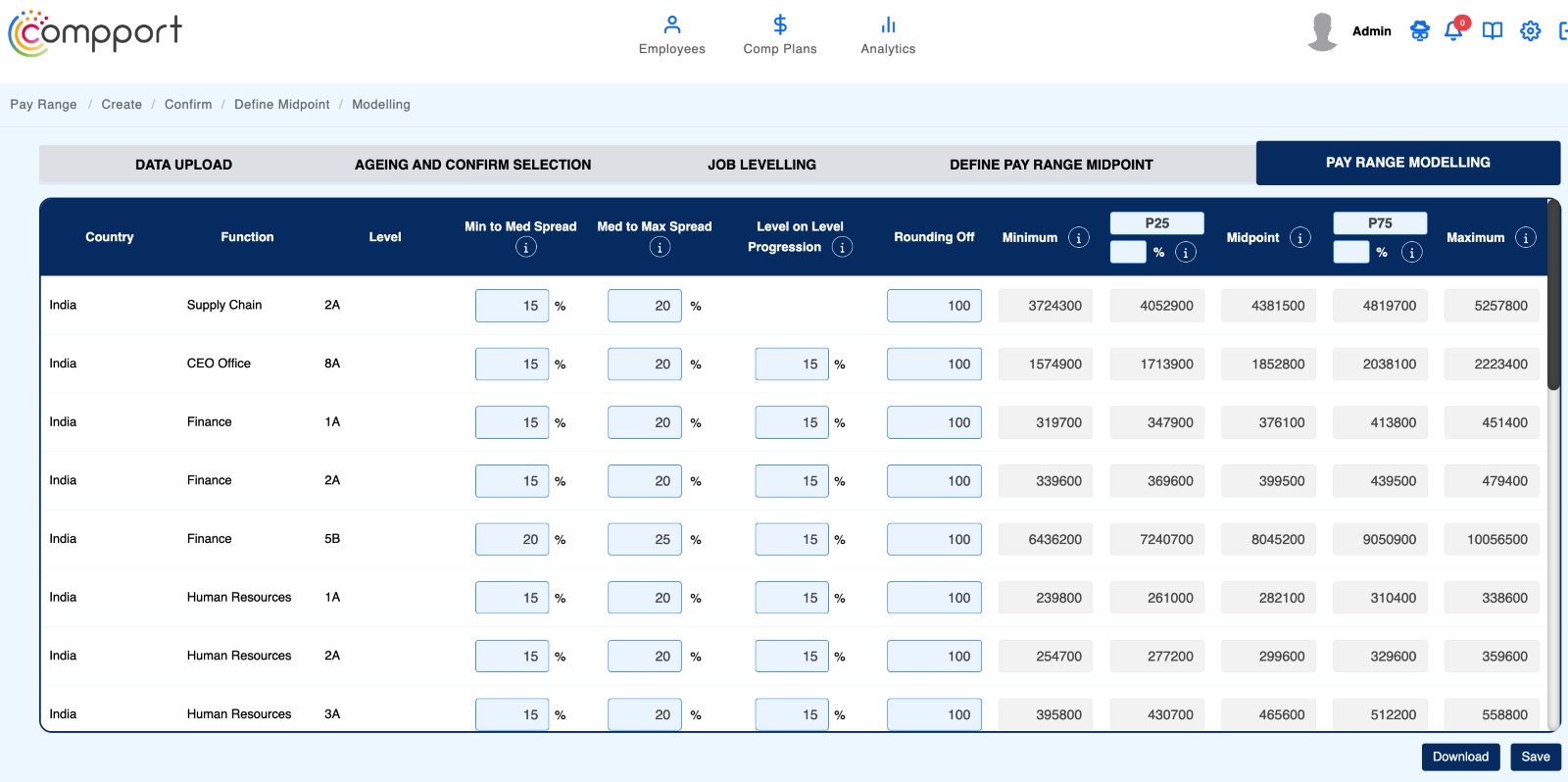Building a Fairer Workplace with Compport's Pay Equity Solutions

The talent war will get more intense. According to a report by Korn Ferry, by 2030, the world will experience a talent shortage of more than 85 million skilled people.
Going by the trend, your job as an HR professional will get tougher. Because attracting and retaining the best talent is not just about offering the highest salary package anymore. Today's workforce prioritizes fair compensation.
A survey by Gartner proves this point. Employees who feel their pay is inequitable have a 15% lower intent to stay with their current employer and 13% less engaged at work.
However, achieving true pay equity requires sophisticated tools. Spreadsheets are not the best choice for drilling down to each element of the data that is needed for in-depth pay equity evaluations.
Your best choice is to start using pay equity software like Compport.
How Compport Helps You Champion Pay Equity
Compport empowers organizations to establish fair and competitive pay ranges with the powerful pay range builder. It puts you in the driving seat to design, compare, and implement a pay structure that is derived systematically and fair to your employees as well:
1. Multi-dimensional pay ranges

Compport removes the most compelling challenge for organizations to bridge the pay gap in the workplace: one-size-fits-all pay structures. With Compport, organizations can follow a systematic approach to define pay ranges based on multiple parameters like country, job function, business unit, grade, talent, skills, and more.
This approach ensures that employees are compensated based on their roles, responsibilities, and skills, irrespective of their position.
For example, an engineering manager with a high in-demand skill set in machine learning may have a higher salary as compared to another engineering manager with different skills.
2. Dynamic market adjustments

Using market data as a benchmark is a crucial step in determining competitive pay. But market data keeps changing. Compport allows you to factor in these movements and market volatility with the data ageing feature.
After you have identified the benchmark data, choose the period for which you want the data to be aged. Similarly, choose the location, function, and job level this data will be applied to.
This simple step ensures that you’re not only using benchmark data but also keeping your pay structure relevant according to the current market trends. Data ageing is highly effective for determining the current pay structure. But it also allows for future headcount planning by incorporating projected salary changes based on market data.
3. Job levelling for niche roles

Not all jobs will have readily available market data. This is especially true for niche roles as they are rare. Compport allows you to create pay ranges for these niche roles by blending them with similar positions that have market data available.
Pick one or multiple benchmark data and add weightage to them based on your preference. Compport’s advanced algorithm also allows you to calculate the minimum and maximum salary. You can also calculate different percentiles based on the market data and the weightage that you applied.
This process ensures that pay equity is followed even for the most specialized positions within your organization.
4. Intelligent range modelling

The pay range modelling process is the final step in determining the pay range for your employee database. This step considers factors such as the range spread, which allows you to add a certain level of percentage over the median data to determine the minimum and maximum pay range.
In addition to creating a range spread, you can also create a level on level progression for the job functions. This step lets you determine the difference between each job designation within job functions. For example, if you set the level on level progression at 10%, it means the senior manager in the supply chain job function will be paid 10% more than the manager in the supply chain.
Range spread and level on level progression keep your compensation policy within a fair pay range structure. It also allows you to stay within your budget.
5. Pay equity analysis

The pay equity analysis screen gives you a holistic view of your pay structure that you have determined following the above steps. In this screen, you will find the basic pay details of the employees which include the minimum, midpoint, and maximum pay.
Furthermore, it compares your pay structure with the market benchmark data and your present internal data to highlight any pay equity gap. It also shows the average compa ratio for each job function to compare the annual salary of employees with the median salary for similar positions.
Wrapping it up
Achieving pay equity is a strategic business decision, but traditional methods leave organizations vulnerable to pay gaps and a disengaged workforce.
Compport’s pay equity management features equip the compensation teams to build a fair and competitive compensation structure. Features like multi-dimensional pay ranges, data ageing, job levelling, and range modelling empower organizations to establish pay equity and attract the best talent.
Ready to build a more equitable and successful workplace? Schedule a demo with Compport today.
Recommended articles

Master Sales Incentive Calculation: Stop making these mistakes

Different Components of Employee Compensation


